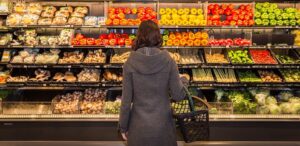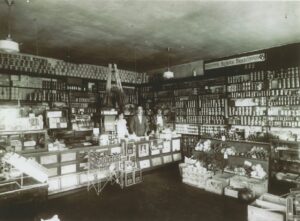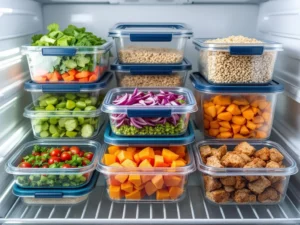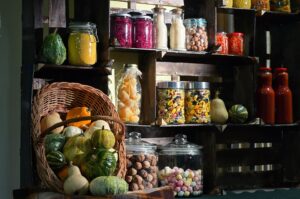
22. NAME BRAND, AND?
Take the time to look at the store brand products whenever possible. If you take the time to look at the label you will find in most cases, they’re made by the same manufacturers, using the same ingredients, as your major-label brands.
They almost always taste just as good, provide comparable nutritional content, and come at a fraction of the cost.
23. YES WE CAN
Canned foods are wallet friendly and easy to cook with, but they can also come with a lot of unhealthy ingredients like high sodium content and unhealthy packing materials like oil and syrup.
When buying cans, look for low-sodium options and canned meats packed in water, not oil.
24. ONE AND DONE
A study supported by the Marketing Science Institute found that shoppers who made “quick trips” to the store purchased an average of 54 percent more merchandise than they had planned to.
Like we suggested before, make yourself a shopping list, so when you do take a trip to the market you can get everything you need in just one visit. It’ll save you on gas as well.
25. BULK UP
Discount clubs are great cost-saving alternatives, even if you have to pay a fee to join. However, it pays to be smart when purchasing in bulk by avoiding items with a limited shelf life.
Focus on items you use a lot of and that won’t spoil, like paper products and frozen foods. Some shopping clubs also offer discounted gas, so there’s another way for you to save some money.
26. WEIGHT WATCHER
Sometimes items may appear cheaper than the more expensive item you’ve just discarded but it actually might contain less food.
Checking the net weight is also a great way of making sure you’re not paying for a lot of packaging, only to get home and discover that cheap box is practically empty.
27. STAY LOCAL
It’s always better for your health, your community and your bank balance if you support local businesses but that shop just around the corner may have another advantage.
A 2004 Tulane University study found that having easy access to supermarket shopping was associated with increased household use of fruits (84 grams per adult equivalent per day).
Map out the supermarkets both close to home and close to work and while you’re at it, look up the farmer’s markets in the area at localharvest.org, an online database containing nearly every outdoor market nationwide.
28. EMPTY TANK, EMPTY BANK
A rather odd but informative 2008 study published in the Journal of Consumer Research found that consumers, even when on a tight budget, are more likely to spend more if their appetites are stimulated before making a purchase.
The study tested the reactions of women shoppers to a hidden chocolate chip cookie–scented candle in the room. Nearly 70 percent who got a whiff of the cookie scent said they would buy a new sweater even though they were on a tight budget, compared with only 17 percent of those who weren’t exposed to the cookie smell.
Just like our advice to snack to keep you on track, have a bite to eat before venturing out to the shops.



























































